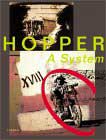|
For this creator "the void" is an empty place between film jobs, acting, directing, writing—"a system of moments" frozen like the flick of a candle caught forever licking the darkness, the splatter of wet paint caught in a dry burst coming out of a great angst and pain having been denied work in my medium of choice: movies. The explosion—to fill the void between film work, a system of moments occurred, paint, photograph, manufacture, tape, plastic, lights, sets, shadow, assemblage, motion, found objects, with a rope of history binding me to Abstract Expressionism, action painting, and Marcel Duchamp (whom I met in 1963). Duchamp said the artist of the future will merely point his finger and say it’s art, and it will be art. I was a part of the California School of Assemblage and New Realism with Wallace Berman, George Herms, Edward Kienholz, Llyn Foulkes, Bruce Conner, and Edward Ruscha, and one of the founders of Conceptual Art with Proof (1963), and Wilhold the Mirror Up (1961).
This show is about my life in art as actor, filmmaker, writer, director, painter, photographer, and finger pointer. To enter the show, you must first encounter chain link fences and razor wire—a labyrinth of billboards. It’s a hostile environment. It’s Los Angeles. We’re outside the movie studio. How do you find a way inside? A door with a guard finally lets you inside. It’s a studio for movies: you see props, lights, sets, flags, cookie cutters, etc. devices to make lights and shadows in film. You are in a movie set.
This space will open into other spaces where I will display what was made in the void what the system of moments allowed to be created. At the same time shown on the monitors and projectors, are selected moments from the movies I was working on before and after these bursts of creative energy that were allowed to happened because film work was denied me. The void. The emotional dance around the canvases was possibly more valid than the human scratches that are often left on the canvases—but so is life. The necessity to make these photos and paintings came from a real place—a place of desperation and solitude—with the hope that some day these objects, paintings, and photos would be seen filling the void I was feeling. This is a story of a man/child who chose to develop his five senses and live and experience rather than just read. If you know what you hear with your ears, and see with your eyes, all the secret wonders of the world will be revealed to you. Just don’t lie, and don’t do what you hate, for all things are manifest before heaven.
It was the twentieth century—a machine, computer, car, airplane, radio, TV, electricity, printed word century. I took my five senses as far as I could derange them.
I read only minimally, and memorize a lot of scripts which I immediately forget when I hear the director say "cut and print." If there’s a hair in the gate and we have to shoot the scene one more time, I have to memorize the scene again, so complete is my disposal of the words when I hear "cut and print." So to create, empty your head, erase the old tapes, find your tension areas, relax, think of nothing, allow your smell, taste, touch, hearing and seeing to dictate the response to the stimuli, attack the canvas as in action painting or the frozen moment of a discarded corner trapped in a photo. I photographed the artists of the 1960s who brought about change; their work will be a metaphor for the art of the future. Lithos become the size of billboards. The return to reality from Abstract Expressionism, comic books, coke bottles, coup cans, movie stars, paintings off the easel onto the floor, off the wall becoming the room, discards of society becoming poetry of time lost and found frozen in the moment. Hard edge, optical, poptical, assemblage, conceptual. I was a part of what my good friend Walter Hopps called the "Dream Colony."
I was cast in plaster by Kienholz. I was one of the two Bekins’ moving men in Barney’s Beanery. All the heads are made of clocks. I am the only one with two faces of a clock—one focuses on a society girl and the other on a black hooker. Maybe this is an appropriate metaphor for a man trying to move things along, facing the schizophrenic whole of society in a very primal gesture, in a limited space with no formal education. To work with Kienholz and Warhol before they were famous, to walk with Martin Luther King from Selma to Montgomery, to have been in over 120 films, and to be able to expose this personal and artistic expression is at once rewarding and frightening as it culminates my artistic plight. So welcome to my "invitation to the void—a system of moments."
Click on the cover to buy it at Amazon.com!
 |
*Dennis Hopper is an actor, filmmaker, writer, director, painter, photographer and finger pointer. A System of Moments (Hatje Cantz, 2001, edited by Peter Noever, MAK) is, in Hopper’s words, "about my life." |